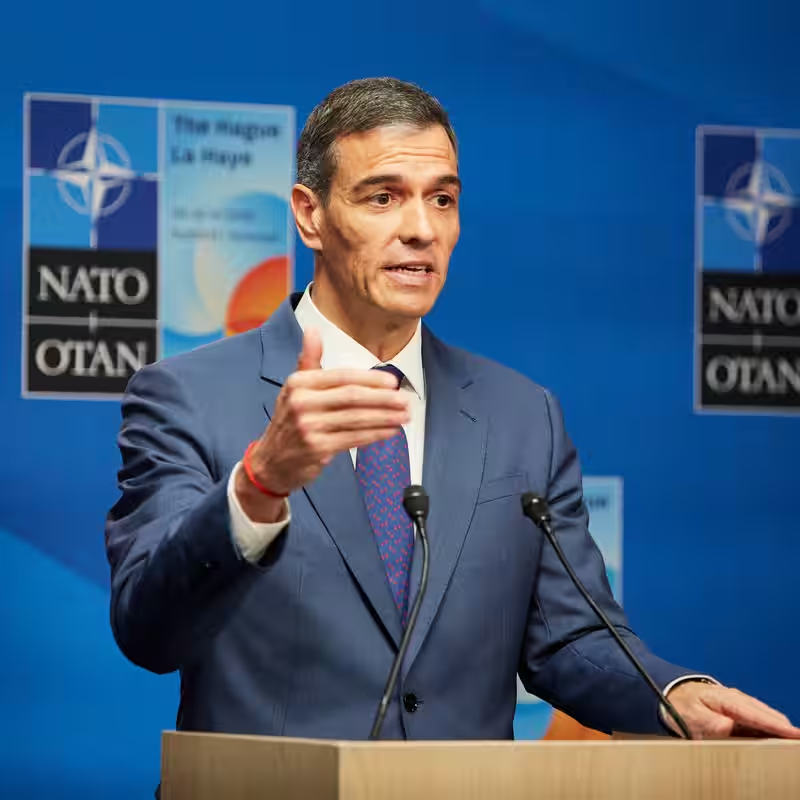Table of Contents
- Trump’s Tariff Threat Explained
- Spain’s Defense Spending Standoff
- NATO Spending: What’s Expected vs. Reality
- Political Fallout in Madrid
- Broader Trade Implications
- Sources
Trump’s Tariff Threat Explained
President Donald J. Trump has reignited his hardline trade tactics by threatening Spain with targeted tariffs over its refusal to dramatically increase military spending. In remarks made Tuesday, October 15, 2025, Trump accused Spain of being a “laggard” in NATO commitments and floated the idea of “trade punishment through tariffs” as a consequence.
“I’m very unhappy with Spain,” Trump said. “I was thinking of giving them trade punishment through tariffs because of what they did, and I think I may do that.”
The threat marks a sharp escalation in U.S.-Spain relations and underscores Trump’s continued emphasis on defense spending as a litmus test for alliance loyalty—especially within NATO.
Spain’s Defense Spending Standoff
Spain currently allocates just 1.3% of its GDP to defense—well below the 2% NATO benchmark and far short of the 5% target Trump has demanded from allies. Prime Minister Pedro Sánchez has pledged to reach the 2% threshold by the end of 2025, citing budgetary constraints and domestic political pressures from his left-wing coalition partners.
“We are committed to the defense, to the security of NATO and, at the same time, we are equally committed to the defense of our welfare state,” Sánchez told Spain’s Cadena SER radio following Trump’s remarks. He added that Spain was already doing “more than enough,” pointing to troop deployments in Eastern Europe and participation in multinational missions.
NATO Spending: What’s Expected vs. Reality
While NATO’s official guideline encourages members to spend 2% of GDP on defense, Trump has repeatedly pushed for 5%—a figure no ally currently meets. Spain is the only NATO country that has flatly refused to entertain the higher target, arguing that social programs like healthcare and education deserve priority in post-pandemic recovery.
NATO Defense Spending (2025 Estimates)
| Country | Defense Spending (% of GDP) | Trump’s 5% Target Met? |
|---|---|---|
| United States | 3.5% | No |
| Poland | 4.1% | No |
| Germany | 2.3% | No |
| Spain | 1.3% | No |
Political Fallout in Madrid
For Sánchez, Trump’s tariff threat comes at a precarious moment. His fragile coalition—comprising Socialists, Communists, and regional Catalan parties—has long opposed increased military budgets. Any major shift could fracture his government.
Yet Sánchez has also used his stance as a point of ideological contrast with Trump, positioning Spain as a “liberal mirror” to America’s nationalist turn. He’s championed open immigration policies, criticized Israel’s conduct in Gaza, and downplayed Russia as a direct threat to Spain—positions that have earned him praise on the European left but ire from Washington.
Broader Trade Implications
If implemented, Trump’s proposed tariffs could hit key Spanish exports like olive oil, wine, and automotive parts. The U.S. imported over $20 billion in goods from Spain in 2024, according to U.S. Census data. While Spain represents a small slice of overall EU trade with America, a unilateral tariff could strain transatlantic unity and provoke retaliatory measures from Brussels.
Analysts warn this isn’t just about defense—it’s about Trump reasserting economic leverage as a foreign policy tool. “This is classic Trump: use trade as a club to enforce political compliance,” said Dr. Elena Martínez, a trade policy fellow at the Atlantic Council.
[INTERNAL_LINK:trump-tariffs] | [INTERNAL_LINK:nato-defense-spending] | [INTERNAL_LINK:spain-us-relations] | [INTERNAL_LINK:pedro-sanchez]




